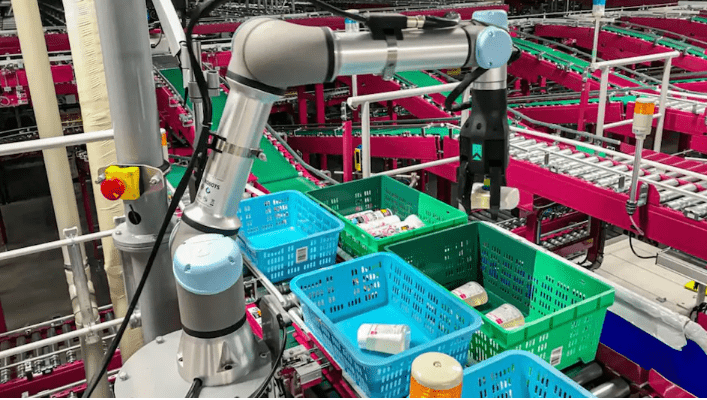There are technological advancements taking place in the field of robotics almost every single day. The latest is a robot by RightHand Robotics for companies to sort products and get orders out. And while it may take humans some time to not just identify but also distinguish a product from another, machine intelligence and a bit of robotic manipulation is all it needs to equip a robot to perform the same.
MIT spinoff RightHand Robotics has combined artificial intelligence (AI) with its robotic piece-picking system to make the process easy, especially for retail companies. Retail operations across the world have undergone a massive change with the explosion of e-commerce, further accelerated during the COVID-19 pandemic when people were forced to stay home and order the necessary items. Besides this, pharmacies, grocery stores, and apparel companies — to improve efficiency — have to ensure in-time inventory fulfillment, restocking items based on purchases made during a day or week.
Lael Odhner, co-founder, RightHand Robotics and an alumnus of MIT, said that when you buy something, you push the cart down the aisle and pick it yourself. When you order a bunch of things online, he said, “The retailer typically needs to pick up single items, run them through a scanner, and put them into a sorter or conveyor belt” to complete the order. “It sounds easy until you imagine tens of thousands of orders a day and more than 100,000 unique products stored in a facility the size of 10 or 20 football fields, with the delivery expectation clock ticking,” he added.
And it’s not just about identifying, picking, and placing. There are products to be dealt with extra care as well. Therefore, the robots also collect data to help RightHand Robotics improve its system and arm its bots with skills to be more gentle and precise in its placement of products, the company added. It plans to introduce the third version of its picking robot this year. The bot is shipped with standardised integration and safety features to make deploying piece-picking robots easier for warehouse operators.
Odhner said that while people might not realise the “enormity” of his company’s progress, it is a huge feat. The reason? The ease of integration, configuration, safety, and reliability, Odhner added. This, means that these systems can be drop-shipped anywhere and they can get up and run with minimal customisation. “There is no reason why this can’t just come in a box or on a pallet and be set up by anyone. That’s our big vision,” he said.




